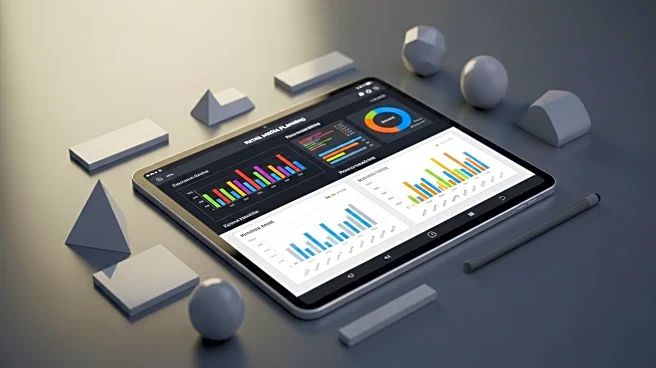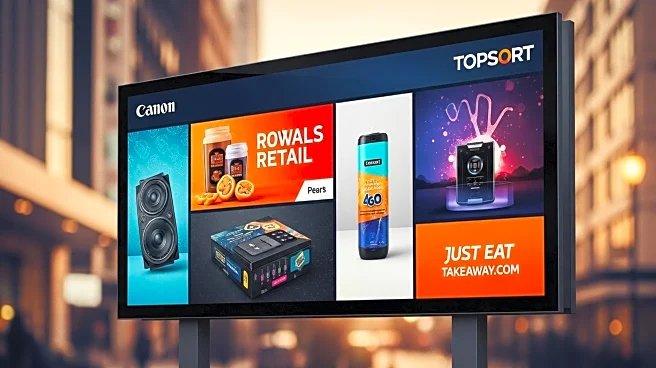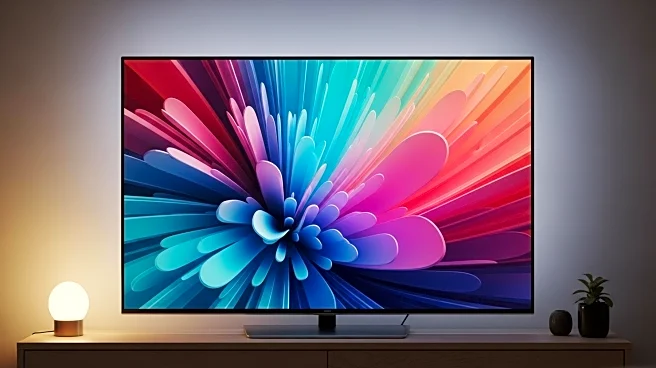What's Happening?
Displayce, a company specializing in digital out-of-home (DOOH) advertising, is revolutionizing the way advertisers approach primetime viewing by utilizing predictive optimization tools. Traditionally,
DOOH relied on fixed schedules and average audience estimates, but Displayce is leveraging data to map audience rhythms and identify peak times for advertising. This approach allows advertisers to dynamically adjust campaigns based on real-time audience data and contextual triggers, ensuring ads are displayed when audience concentration is highest. By using predictive event data, Displayce can forecast audience movements during events like conferences, sports games, and cultural festivals, optimizing ad placement for maximum impact.
Why It's Important?
The shift towards predictive optimization in DOOH advertising represents a significant advancement in the industry, offering advertisers the ability to maximize their reach and efficiency without increasing budgets. By reallocating advertising spend to moments of high audience concentration, advertisers can ensure that their campaigns achieve greater visibility and engagement. This approach not only enhances the effectiveness of advertising but also aligns with broader trends in media where real-time optimization is becoming increasingly important. As advertisers seek to navigate a complex and dynamic media landscape, tools like Displayce's Pulse engine provide a competitive edge by enabling precise targeting and improved campaign outcomes.
What's Next?
As Displayce continues to refine its predictive optimization tools, advertisers can expect further enhancements in the precision and effectiveness of DOOH campaigns. The integration of advanced analytics and automation will likely lead to more sophisticated models for predicting audience behavior, allowing advertisers to anticipate and capitalize on emerging trends. Additionally, as the technology becomes more widely adopted, it may influence broader shifts in advertising strategies across other media platforms, encouraging a move towards data-driven, real-time optimization. Stakeholders in the advertising industry, including media planners and buyers, will need to adapt to these changes to fully leverage the potential of predictive DOOH advertising.
Beyond the Headlines
The adoption of predictive optimization in DOOH advertising raises important questions about privacy and data usage. As advertisers increasingly rely on audience data to inform their strategies, there is a need to ensure that data collection and usage comply with ethical standards and regulations. Furthermore, the focus on real-time optimization may lead to shifts in consumer behavior, as audiences become more accustomed to targeted advertising that aligns with their movements and interests. These developments could have long-term implications for the advertising industry, influencing how brands engage with consumers and how media platforms evolve to meet changing demands.











